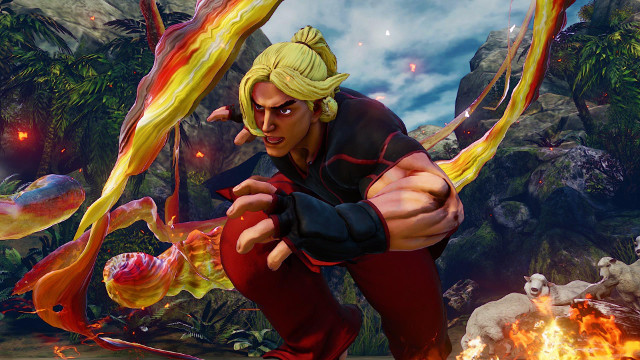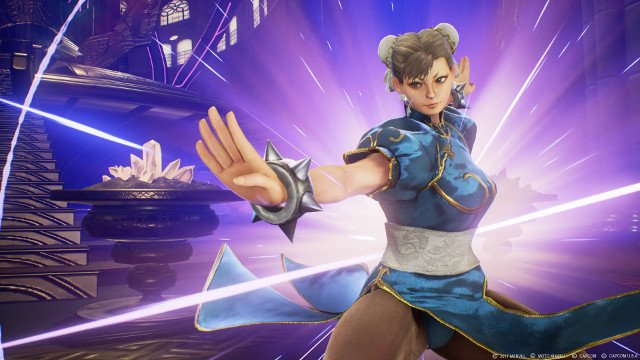Marvel vs Capcom: Infinite is out this week, but many are approaching it cautiously. Fighting game fans will remember the release of their last major fighting game, Street Fighter V, all too well — ignoring the complaints about the simplified combos and meta, there was a furore on most game sites begging the question: “Where’s the content?”
It’s true, Street Fighter V had a weird launch, dodgy server issues compounded by the fact that, without functioning servers for the online play, there was essentially nothing to bloody do. The story mode was literally simple enough for a baby to complete (seriously, check below), the Survival mode gets tedious after half an hour, and all that was left after that was the Training mode. The game was suffering from a lack of content, the state of the servers proved this, and critics didn’t let Street Fighter V off the hook.
Street Fighter V matured and got updates though — a cinematic story was eventually added for free, balance patches removed some complaints about the meta, and a Challenge mode was eventually included – though the lack of an Arcade mode baffles everyone to this day. You’d think that after the damage control Capcom had to suffer with post-launch with Street Fighter V, they’d do absolutely everything to prevent the same situation with Marvel vs. Capcom: Infinite, right?
Well, for the most part, yes. A cinematic story mode is included right away, a full Challenge mode with missions for every character is here, heck, even Arcade mode makes an appearance. But just like with Street Fighter V, there’s a feeling that things are a bit light. Arcade mode doesn’t offer any unique scenes for finishing with different characters, and once story mode’s cutscenes are unlocked, why play that again? There’s very little to reward players who want to play by themselves and unlock things.

But of course this, as with many smaller decisions Capcom have made, all point towards Capcom’s grand eSports aspirations. They’ve shown it with Street Fighter V already – the Capcom Pro Tour encourages players to travel the globe, offers prize money, and even rakes in cash as players buy special Pro Tour DLC packs, costumes and Street Fighter V gets shown on ESPN 2 and BBC Three – and why would Capcom want to restrict all of this to just Street Fighter?
Also: Marvel vs Capcom: Infinite Character Guide: Who’s Who and How They Fight
Many speculate that Street Fighter V’s poor launch was partially down to Capcom rushing the game to launch in time for the Capcom Pro Tour — a theory which is hard to argue with, given the evidence and the complete lack of preparation Capcom had seemed to put in place for launch.
Marvel vs Capcom Infinite is next on the list for eSports glory. We’ve already seen leaks regarding their goals; EVO tournaments, prize pools, Capcom Pro Tour inclusion and more. But what’s most telling, is how these aspects are reflected in the games themselves.
Street Fighter IV is a unique looking game – thick black outlines and calligraphy-inspired fonts help bring home a feeling of water-colored characters battling it out. All of this changed when they made the jump to V though – the watercolour art style is gone, instead going for a slightly more realistic and gritty tone. Heck, even the fonts went for a clean, but also clinical, impact-style aesthetic.
Then we look at Marvel vs Capcom 3 — a colourful, vibrant video game through and through. Character colours pop and comic-inspired aesthetics layer everything from hit effects, fonts, character selection menus – just, everything. Then we look at Marvel vs Capcom Infinite. Once again, these unique aesthetics, the vibrancy and the unique art style have all been shaved away, and we’re left with what is a very clean looking, but again increasingly bland and sterile presentation.
Why would Capcom do this to their own games, which have been praised for their unique aesthetics? To hit the mainstream, of course. To get ESPN air time. Unfortunately, Capcom have made the clear choice to go for a presentation that is less unique, less distinct, but also less confusing, and more approachable.

It’s a situation I can sympathise with — Capcom want so badly to make eSports giants out of their beloved fighting game franchises, but they’re sacrificing so much of what their dedicated fanbase has always loved. Of course, the incentive of tournament placings, sponsorships and prize money is too alluring to professional and hardcore players to keep playing fighters that everyone else has abandoned, but Capcom is walking a thin line when they alienate long-time players for the sake of accessibility — and high level players will tell you that goes for both aesthetics and gameplay.
Capcom don’t need a massive, fully-featured game in order to make a successful eSports title. They proved that with Street Fighter V, but the backlash was brutal. Instead, they can focus on a small amount of content players can whittle away at while the game searches for online foes in the background — a feature both Street Fighter V and Marvel vs Capcom Infinite encourage you to use, almost like a letter of admittance from Capcom that there’s not really much to see or do in these games unless you like playing online.
Capcom have learnt an important lesson, sure; Marvel vs Capcom: Infinite has those features which Street Fighter V neglected, but even still they feel almost like a token inclusion, a grievance, not a fully-featured mode in any sense – and comparing the voiced and sometimes animated scenes each character gets for completing Arcade mode in Ultra Street Fighter 4, or even the small bits of unique dialogue each character gets as a reward in Marvel vs Capcom 3, to the absolute nothing you get in Marvel vs Capcom: Infinite really speaks volumes about where they decided to focus their attention.







